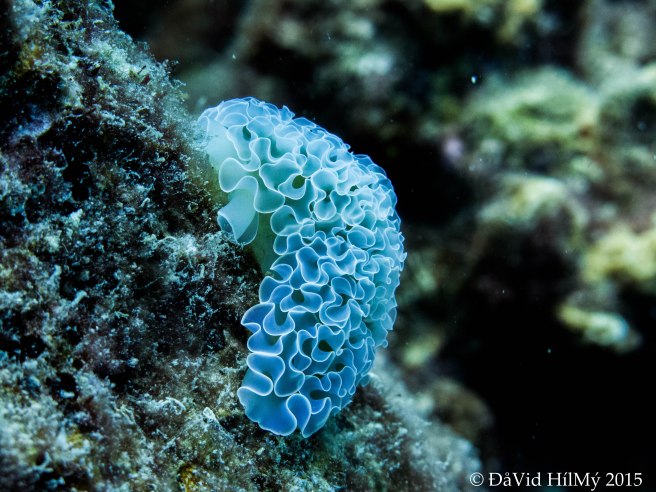
As a part of the A-Z Photographic Glossary of Biological Terms challenge, today it is K for Kleptoplasty, as illustrated by this Lettuce Sea Slug (Elysia crispata) from Bonaire in the Dutch Caribbean.
Looking a little bit like a frilly lettuce, hence its common name, this species lives in the tropical parts of the western Atlantic, and the Caribbean where it is found in more coastal and tropical reef areas where the water is shallow and clear. Like its snail relatives, Elysia crispata uses a rasping organ (radula) to cut into its food- in this case a number of species of green algae, but what it does with its food is rather unique!
While feeding on algae, it will digest almost all of the tissue except for the chloroplasts. This amazing adaptation is termed “kleptoplasty”, derived from “kleptes” (κλέπτης) which is the Greek for “thief”. Chloroplasts are not found in animals but only within the cells of plants and certain protists such as algae and are responsible for harnessing light during the photosynthesis process. After ingesting them, the Lettuce Sea Slug is then able to distribute the chloroplasts throughout the surface of the tissues of its body where they will continue to photosynthesize thus producing sugars which provides the living energy for this unique animal!

